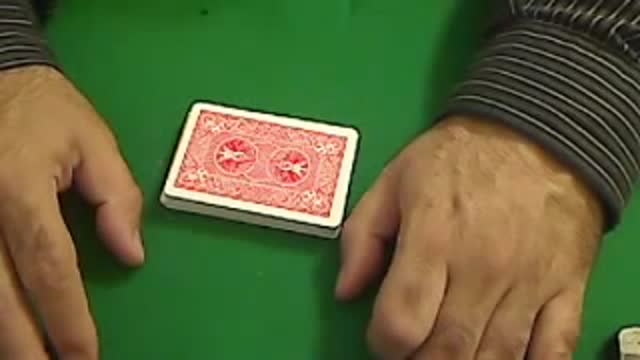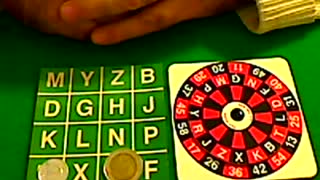Premium Only Content

Martin Gardner's Gambling Game
Martin Gardner's Gambling GameMartin Gardner's Gambling Game Here is a little known mathematical principle applied to card magic by Martin Gardner. The mathematical principle is called the Gilbreath Principle. Impossible to figure out and no sleight of hand. Preparation: (Which is done in private.) Remove all the diamonds from the deck and put them aside. The deck is stacked from the top down Spades, Hearts, Clubs, Spades, Hearts, Clubs, and so on. Put this 39 card deck FACE UP on the table. You can quickly show the cards without giving the order away. Tell the spectator to cut the deck near the middle, if the face card of the LOWER packet is a spade do not complete the cut. The spectator then riffle shuffles the two halves together., the deck is squared, and turned face down. Note: If the spectator does not cut to a spade, have them complete the cut, and cut again. When you see that the LOWER packet has a spade, proceed as above. You do not mention anything about cutting to a spade to the spectator!. Remember, have the spectator keep cutting the deck until they cut to a spade, and THEN have them riffle shuffle the halves together. Dealing: You tell the spectator that the cards will be dealt off the top of the deck three at a time. But before they do, you introduce the wager. ( Instead of money, you can wager beers, potato chips, or whatever. No need to wager money.) Now, ask the spectator to name 2 of the suits (No diamonds of course.) If he chooses Clubs and Hearts You say: For every pair of hearts (or clubs, if he chooses.), I get 25 cents. For every pair of spades, you get $1.00 If he chooses Spades and Hearts You say: For every pair of spades, I will give you a $1.00. For every pair of hearts, I get.25 cents. If he chooses Spades and Clubs You say: For each pair of spades, I will give you a $1.00. For each pair of clubs, I get.25 cents. Now you start. Say they choose spades, and you have clubs. Deal 3 cards off the top of the deck. If there are no matching suits in the group, toss aside. Continue dealing like this. If there are 2 clubs in the group, put this group in front of you. If there 2 spades in the group, put the cards in front of the spectator. Finish out the deck dealing in this method. The bet seems fair, but you will always win even if you give them 10000-1 odds. You will have to dress this effect up to suit your style, since it is not a "flashy" type effect. An great book on mathematical tricks is Magical Mathematics: The Mathematical Ideas that Animate Great Magic Tricks by Persi Diaconis and Ron Graham. Click here: http://tinyurl.com/bsstaqv
-
 6:04
6:04
CosmicConjurer
4 years agoAlphabet Roulette Gambling Game
147 -
 5:13
5:13
CosmicConjurer
4 years agoDemo of Martin Gardner's Find the Lady Puzzle and the Scotch Purse Puzzle
104 -
 0:30
0:30
twoclones
4 years agoPine Martin
1.02K -
 0:30
0:30
Mazdajim
4 years agoExploding Martin towers
716 -
 1:49
1:49
WGBA
5 years agogambling for Sunday's game
14 -
 0:20
0:20
Gillian
4 years agoSt Martin F.W.I. beachtime
137 -
 3:35
3:35
WKBW
4 years agoMARTIN LUTHER KING DAY CELEBRATION
74 -
 0:09
0:09
Gillian
4 years agoGrand Case, St Martin
132 -
 7:14
7:14
Dinesh D'Souza
4 years agoWas Martin Luther King Conservative?
5.41K36 -
 5:10:00
5:10:00
DoomGnome
11 hours agoAdventures with DoomGnome: Fable Anniversary, REDUX Mod + Others, ROAD TO 500!
26K